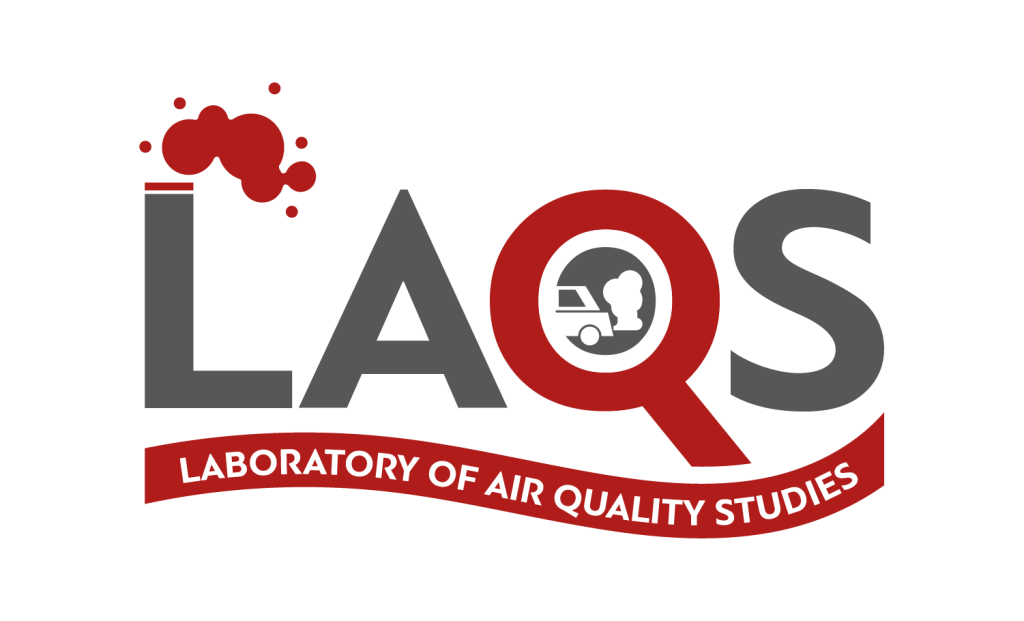Particle Monitoring Instruments
The Aerodyne Aerosol Mass Spectrometer (AMS) is capable of providing quantitative size and chemical mass loading information in real-time for non-refractory sub-micron aerosol particles. The HR-TOF AMS has the capacity of producing near on-line mass loadings of non-refractory (NR; any chemical species which vaporizes at 600 ˚C) chemical species, through flash vaporization (impaction on a resistively heated tungsten surface) in combination with electron impact ionization (EI ionization by 70 eV electrons) and Time-Of-Flight mass spectrometry. In addition, particle diameters can be simultaneously measured by means of Particle Time Of Flight, facilitating chemically resolved size distributions.
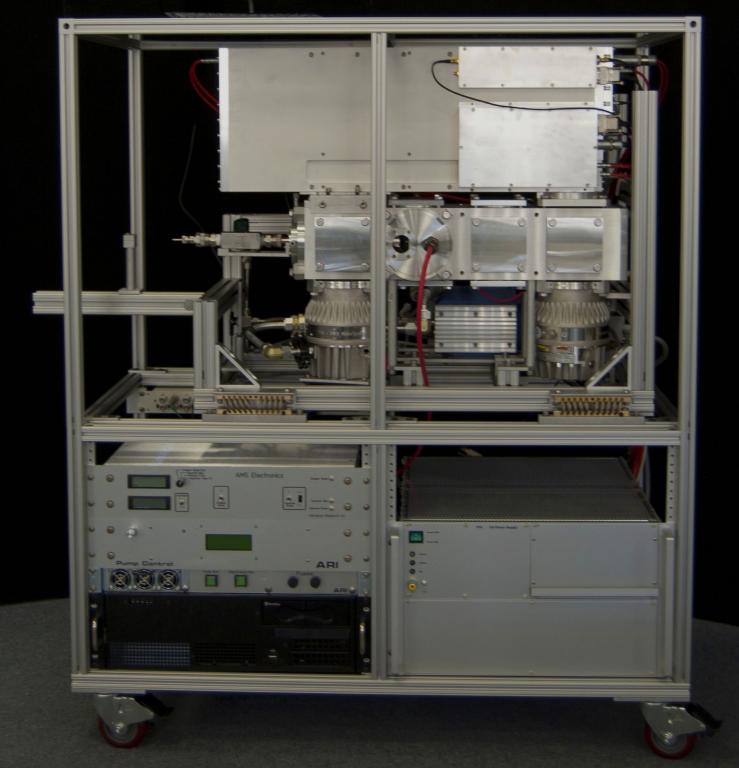
Manual: http://www.scribd.com/doc/70429500/AMS-Manual-Latest
The ADI 2081 Particle-into-Liquid Sampler (PILS) can be used as preconditioning unit for several analytical applications in ambient or industrial environment, determining the bulk chemical composition of ambient aerosol particles. The instrument consists of two units. The first one is an aerosol extraction unit where particles are passed through a growth chamber saturated with water vapor. Liquid droplets are grown, and the resulting liquid is collected and transferred to the detection system. The second unit is the detection system which can include ion chromatographs (IC) or a total organic carbon detector (TOC).
![]()
Manual: not available
Fourier Transform Infrared Spectroscopy (FTIR) is a widely used technique for rapid material identification. FTIR technique is used to obtain an infrared spectrum of absorption or emission of a solid, liquid or gas. The ALPHA FT-IR Spectrometer offers all the capabilities to achieve an easy routine analysis. It provides the ability to collects simultaneously high-resolution spectral data over a wide spectral range.
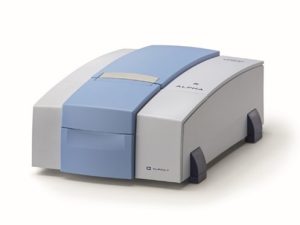
Manual: not available
Cooper Environmental’s Xact® 625i is designed for high time resolution multi-metals monitoring of ambient air, with detection limits that rival those of laboratory analysis. The Xact® 625i comes standard with a solid-state meteorological sensor and Cooper Environmental’s proprietary ADAPT analysis package, making the instrument one of the most powerful air pollution source detection offerings in the industry.
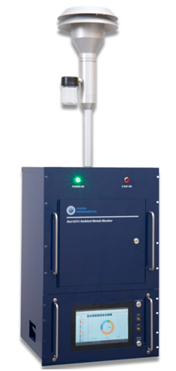
The system uses reel-to-reel filter tape sampling and nondestructive energy dispersive X-ray fluorescence (EDXRF) analysis. The air is sampled through a low volume (16.7 l/min) particulate matter (PM) size-selective inlet and drawn through a filter tape. The resulting PM deposit is then advanced into the analysis area where the sample is analyzed by EDXRF for selected metals while the next sample is collected.
https://sci-monitoring.com/product/xact-625i-ambient-continuous-multi-metals-monitor/
The AAC is an ideal instrument for generating a truly monodisperse aerosol from a polydisperse source. This aerosol instrument is capable of classifying particles between 25 nm and up to 5 μm. It transmits particles of a selected aerodynamic diameter by balancing opposing centrifugal and drag forces, allowing the selected particles to be carried by the sheath flow to the outlet. This principle of aerosol selection or classification is independent of the charge state and produces a true monodisperse aerosol output, with a high transmission efficiency limited only by diffusion and impaction losses.
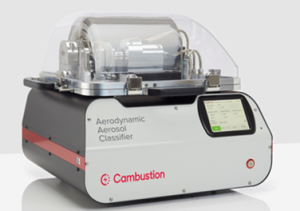
Manual: not available
The ELPI®+ (Electrical Low Pressure Impactor) is a real-time particle measurement instrument for measuring airborne particle concentration and size distribution. The operating principle is based on well-known ELPI® technology. The particles are first charged into a known charge level in a corona charger, and then size classified in a low-pressure cascade impactor according to their aerodynamic particle size. The impactor stages are electrically insulated from one another, and sensitive electrometers are connected to each impactor stage. The charged particles that are collected in a specific impactor stage produce an electrical current, which is recorded by the respective electrometer channel. This current is directly proportional to the number concentration of particles on that impactor stage.
The ELPI®+ measures particles in 14 size fractions in the range from 6 nm to 10 μm. The 13 impactor stages operating in the range of 16 nm - 10 μm can be used to collect the sample on a foil or a filter for conducting a gravimetric or chemical composition analysis in each particle size class.
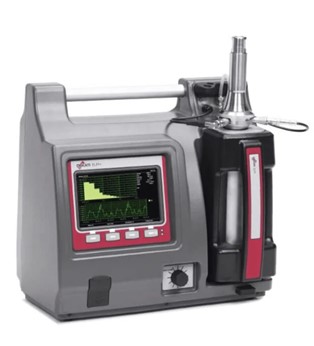
The Single Particle Soot Photometer-Extended Range (SP2-XR) delivers accurate, size-resolved single particle measurements of black carbon mass and size with real-time, direct output suitable for monitoring applications and field research. The SP2-XR uses a high optical power intracavity Nd:YAG laser for the direct measuring of refractory black carbon (rBC) in individual particles. Light absorbing particles, mainly rBC, absorb energy and are heated to the point of incandescence. The energy emitted during incandescence is measured and a quantitative determination of black carbon mass of the particle is made.

Manual: Manual, Temp Control and Flow Measurement Box (netdna-ssl.com)
The Aurora 2000 PM Correlating Nephelometer measures continuously and in real-time, aerosol light scattering and derive particulate concentrations in a sample of ambient air using a single wavelength and a BETA monitor.
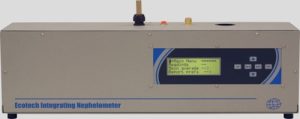
The Portable Sievers 900 Total Organic Carbon Analyzer measures with high sensitivity the concentration of total organic carbon (TOC), total inorganic carbon (TIC), and total carbon (TC) in liquid or water samples. The operation of the analyzer is based on the oxidation of organic compounds to form carbon dioxide (CO2) using UV radiation and a chemical oxidizing agent. Carbon dioxide is then measured by a sensitive, selective membrane-based conductometric detection technique. For every measurement, the concentration of inorganic carbon species is determined and, after oxidation of the organic compounds, the total carbon (TC) content of the sample is measured. The concentration of the organic compounds is then calculated from the difference between the concentrations of TC and TIC.
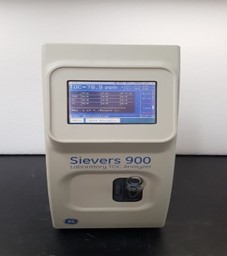
Manual: O&M.book (acmerevival.com)
The Aethalometer AE43 provides a real time readout of the concentration of Black Carbon (BC) and Brown Carbon (BrC) aerosol particles in air stream. These particles are emitted from all types of combustion, most commonly from diesel exhaust. The Aethalometer draws the sample air stream through a filter tape. Aerosol collection is performed on two spots on the tape simultaneously at different flow rates and is illuminated by a multi-wavelength light source. Detectors measure the attenuation of light by the absorbing components of the aerosol, relative to a reference through an un-exposed portion of the tape. The filter tape advances on a time schedule, or when a pre-set loading limit is reached.
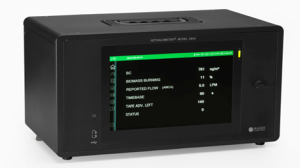
Manual: not available
The Sunset Laboratory Carbon Aerosol Analyzer is a thermal optical analyzer for bulk organics and elemental carbon. It uses a proven thermal-optical method to analyze for organic and elemental carbon aerosols collected on quartz filters. The samples are thermally desorbed from the filter medium under an inert helium atmosphere followed by an oxidizing atmosphere using carefully controlled heating ramps. A flame ionization detector (FID) is used to monitor the analysis.
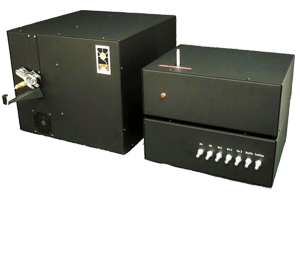
Manual: not available
A thermodenuder (TD) is an instrument used in thermal evaporation studies. A TD usually consists of two sections: the heating section where volatile particle components evaporate, leaving behind the less volatile species in the particulate phase, and the cooling section (denuder). The second one often contains activated carbon to prevent vapor re-condensation. TDs are used to generate thermograms, particle mass fraction remaining (MFR) as a function of TD temperature.
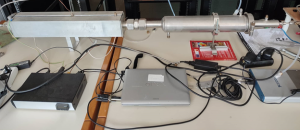
Manual: not available
Multi-Angle Absorption Photometer measures the absorption of elemental carbon in ambient particles. The portion of elemental carbon to be found in ambient air is determined applying a method which is based on a combination of the reflectometer method at certain scattering angles and the transmission. It serves to continuously measure and monitor the particulate pollutant species black carbon expressed as mass concentration (ng m-3) in a continuous operating environment.

Manual: not available
The Model 5014i Continuous Ambient Particulate Monitor continuously measures the mass concentration of suspended and refined particulates (e.g., TSP, PM10, PM2.5, and PM1) by the use of beta attenuation. In addition, the influence of natural Radon (Rn-222) gas is corrected for as a mass refinement step allowing better sensitivity at lower ambient particulate concentrations.
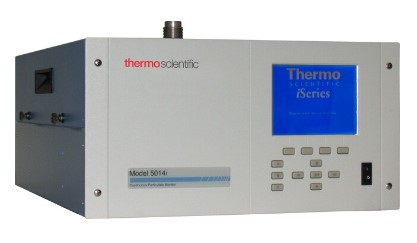
In contrast to other beta attenuation monitors using Carbon-14 (C-14) as a source of the beta rays, the Model 5014i particulate sample collection area is located between both the C-14 source and the proportional counter. While ambient particulate is being deposited onto a filter tape sample spot,
the dynamic filter loading is measured simultaneously by the attenuation of the C-14 source beta rays. As a result of this configuration, a continuous real-time measurement of airborne particulate is provided.
The Model 3480 Electrospray Aerosol Generator produces stable, monodisperse, submicrometer aerosol in the range from less than 3 to greater than 100 nanometers. It achieves such small diameters by moving a conductive liquid solution or suspension through a capillary and applying an electrical field to the liquid at the capillary tip. The electrical field draws the liquid from the tip into a conical jet from which ultrafine charged droplets are emitted. Air and CO2 are merged with the droplets, and the liquid evaporates while the charge is neutralized by an ionizer. The result is a neutralized, monodisperse aerosol that is practically free of solvent residue.
Manual: not available
TSI 3775 Condensation Particle Counter (CPC) is a general purpose particle counter that can detect airborne particles down to 4 nm in diameter and uses n-butyl alcohol (butanol) as a working fluid. Measurement range spans between 0 to 107 particles per cubic centimeter. In this CPC an aerosol sample is drawn continuously through a heated tube where butanol is vaporized and diffuses into the aerosol sample stream. The aerosol sample and butanol vapor is then cooled so that the butanol vapor becomes supersaturated and ready to condense on the existing particles. Once condensation begins, particles quickly grow into larger droplets and pass through an optical detector where they are counted easily.
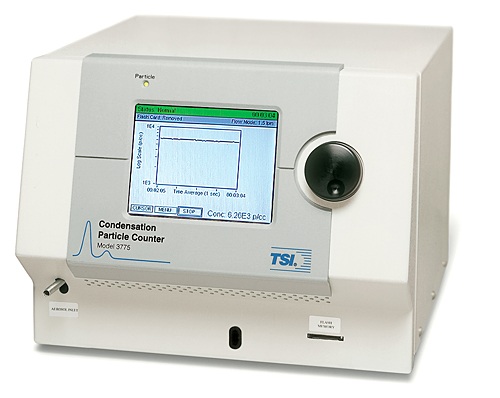
This CPC can detect airborne particles down to 5 nm in diameter utilizing state-of-the art water based condensation particle counting technology. The GP-WCPC draws in an air sample and counts the number of particles in that sample to provide a particle concentration value that is displayed as the number of particles detected per cubic centimeter of sampled air. It uses a patented technology to condense water vapor onto particles, growing them into droplets which are then detected by a conventional optical counting system. The stream of aerosol particles is uninterrupted and follows a laminar flow path from the sample inlet to the optical detector.
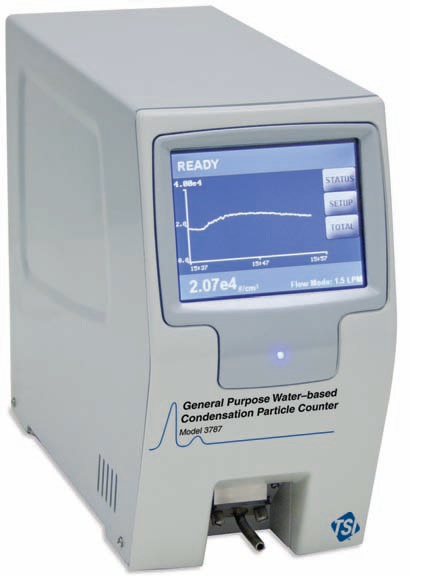
Manual: not available
The third generation water-based CPC comes with numerous enhancements, comparing to the other CPC models like unprecedented reliability, low maintenance and adjustable counting efficiency. This cutting-edge counter can measure down to 2.2 nm. The 3789 features an adjustable D50, making it the most versatile of the CPCs in TSI Incorporated’s line-up.
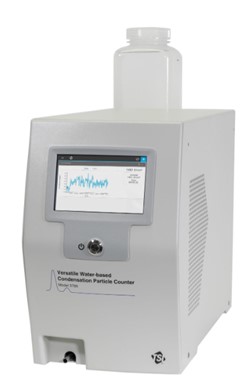
The Model 3080 Electrostatic Classifier can be used with either Differential Mobility Analyzer (DMA): Long or Nano, as the main component for generating or sizing aerosols. Given a polydisperse input aerosol, the instrument output can be a stream of monodisperse aerosol of known particle size (particle electrical mobility).
In an aerosol generation system, the Electrostatic Classifier selects aerosol particles of uniform size from a polydisperse source, resulting in a highly monodisperse aerosol. The Long DMA offers classification in the range from 10 to 1000 nm in diameter. The Nano DMA offers classification from 2 to 150 nm in diameter.
In a particle sizing system, the Electrostatic Classifier separates particles by size for high-resolution measurements of particle size distribution. When used in TSI Scanning Mobility Particle Size (SMPS) spectrometers, for example, monodisperse aerosol exiting the Electrostatic Classifier passes to a Condensation Particle Counter (CPC), which measures particle number concentration. By scanning quickly through a portion of the size range from 2 to 1000 nm (size range varies by SMPS configuration), the SMPS measures the size distribution of the aerosol precisely.
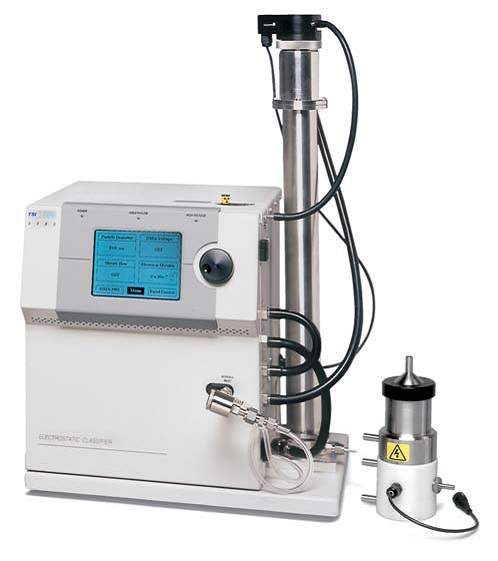
Differential Mobility Analyzer 3081 is one of two DMAs designed for use with TSI Series 3080 Electrostatic Classifiers. It comes standard on the Model 3080 Electrostatic Classifier, which generates particles from 10 to 1000 nm and is a key component of our Scanning Mobility Particle Sizer™ (SMPS™) systems. It is a powerful instrument that continuously separates aerosol particles according to their migration velocities in an electric field with high resolution resulting to a monodisperse flow which passes to a Condensation Particle Counter.
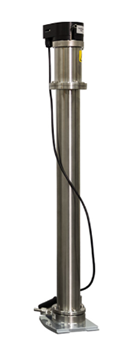
Manual: https://cires1.colorado.edu/jimenez-group/Manuals/SMPS_3080_manual.pdf
This model serves as a non-radioactive alternative to 85Kr, 210Po, and 241Am aerosol neutralizers. The newer iteration, the 3088 Aerosol Neutralizer, offers enhanced features.
https://tsi.com/discontinued-products/advanced-aerosol-neutralizer-en/
This Aerosol Neutralizer uses a radioactive source (Kr-85) to perform this function. The radioactive source ionizes the surrounding atmosphere into positive and negative ions. Particles carrying a high charge can discharge by capturing ions of opposite polarity.

This model is designed to fit the Model 3082 Electrostatic Classifier, all Model 3938 Scanning Mobility Particle Size Spectrometers, and the model 3150 and 3160 automated filter testing systems. The 3077 is best suited to low flow rate applications with moderate aerosol concentrations. The 3077 neutralizer is also a beta emitter.
https://tsi.com/products/aerosol-neutralizers/aerosol-neutralizer-3077/
These precision cascade impactor is designed for sampling and collecting size-fractionated particle samples for gravimetric and/or chemical analyses. The Model 110-R Micro-Orifice Uniform Deposit Impactors (MOUDI™) has a sampling flow rate of 30 L/min and is provided with an 18 µm cut-point inlet stage followed by additional stages to size-fractionate aerosol particle samples. The 10-stage
Model 110-R has a lower cut-size of 0.056 µm. The MOUDI impactor differs from other conventional cascade impactors in the use of a large number of micro-orifice nozzles to reduce jet velocity and pressure drop, minimize particle bounce and re-entrainment, and enhance collection efficiency.

TSI Model 3330 was designed to provide optimal resolution over the size range of 0.3 to 10 μm. The sample aerosol is pulled straight into the measurement region of the OPS to reduce particle losses due to transport. A sheath flow surrounds the sample, focusing the aerosol to enhance size resolution, and keeping the optics clean for improved reliability and low maintenance. The flow rates in the OPS are carefully controlled using real-time feedback to ensure concentration accuracy. The temperature and humidity of the sample is measured and recorded. In the optical chamber, the aerosol crosses a laser beam, creating a light pulse. The intensity of the flash is used to count and size the particles.
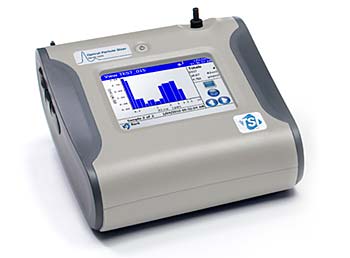
Manual: not available
The Model 8530 of DustTrak aerosol monitor is a single-channel, light-scattering laser photometer that provides real time mass concentration of aerosols. It uses a sheath air system that isolates the aerosol in the optics chamber to keep the optics clean for improved reliability and low maintenance. The DustTrak II Aerosol Monitor measures aerosol contaminants such as dust, smoke, fumes, and mists.
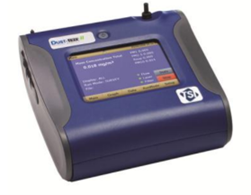
Manual: DustTrak II Aerosol Monitor Model 8530/8531/8532/8530EP (brj.dk)
Gas Monitoring Instruments
Serinus 60 NO2 analyser represents the latest, cutting-edge addition, with Cavity Attenuated Phase Shift (CAPS) spectroscopy technology. This technology allows direct measurement of nitrogen dioxide (NO2), rather than an indirect calculation from a chemiluminescence analyser. No converter, no high vacuum, no ozone, and no chemical reactions are required. Using a modulated blue LED light source, the detector measures the phase shift attributable to the level of NO2 in the measurement cell over an average path length of several kilometres.
This spectrometer is a new prototype instrument for the measurement of VOCs and IVOCs that has been developed and evaluated experimentally. Ionization of the organic pollutants in low-temperature plasma is achieved either by proton transfer reactions due to the presence of oxonium ions or by charge transfer reactions due to the presence of NO+ and O2+ ions. The prototype mass spectrometer has several new and distinguishing features compared to existing PTR TOF MS technology. Most notable are (a) the transverse arrangement in the ionization source permitting the use of an enlarged inlet with increased sampling flow rate (adjustable within a range of 0.2–5 L min−1), leading to enhanced sensitivity; (b) a high-efficiency charge transfer ionization scheme established in the extended volume occupied by the low-temperature plasma, occurring in parallel to proton transfer reactions driven by the presence of oxonium ions; (c) a segmented RF ion guide operable over an extended range of pressure settings to accommodate the high pressure in the ionization source and to bunch the continuous ion beam received from upstream ion optics; and (d) a high-performance TOF analyzer with a mass resolving power of 15,000 (fwhm) at mass-to-charge 250 Th and with a mass accuracy of typically lower than 10 ppm in the lower m/z region.
Τhe PTR-TOF 6000 comprises a high-resolution ioniTOF and IONICON’s exclusive PTR technology with TRU-E/N™ for a powerful PTR-TOFMS experience. The X2 technology abord this instrument combines the latest generation of the ION-BOOSTER funnel as well as the hexapole ION-GUIDE. The ion funnel focuses the ions into the hexapole ion guide which results in nearly lossless transmission of an extremely focused ion beam into the TOF mass spectrometer. This increases the sensitivity and also improves the instrument’s mass resolving power.
The patented IONICON ion-chemistry quality ensures precise E/N conditions, well-reproducible measurement results and the highest possible level of quantification accuracy.
![]()
A proton Transfer Reaction – Mass Spectrometer allows the simultaneous online monitoring of volatile organic compounds (VOCs) like acetone, acetaldehyde, methanol, ethanol, benzene, toluene, xylene and others present in concentrations down to <30 pptv in ambient air. Proton transfer reaction is a chemical ionization process that offers a very efficient ionization for most VOCs at reaction rates of approximately 2x10-9 cm3 s-1. Since proton transfer is a soft ionization method the fragmentation rates can be kept very low.
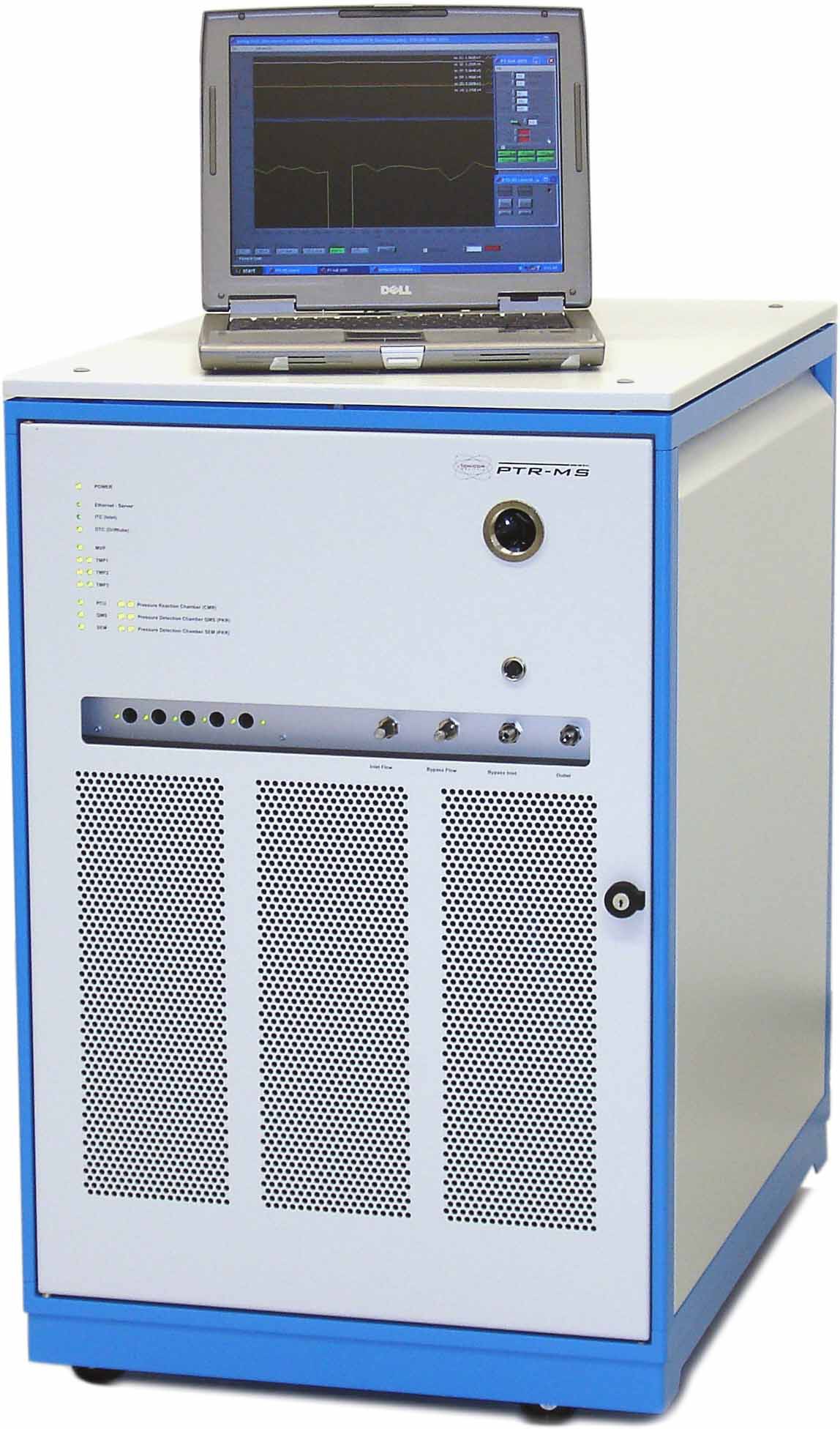
Manual: not available
The Model 300E measures low ranges of carbon monoxide by comparing infrared energy absorbed by a sample to that absorbed by a reference gas according to the Beer-Lambert law. This is accomplished with a Gas Filter wheel which alternately allows a high energy light source to pass through a CO filled chamber and a chamber with no CO present. The light path then travels through the sample cell, which has a folded path of 14 meters.
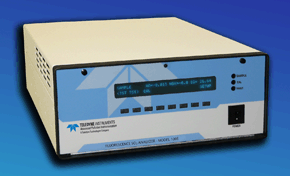
Manual: not available
The Model T360 CO2 analyzer measures Carbon Dioxide by comparing infrared energy absorbed by a sample to that absorbed by a reference gas according to the Beer-Lambert law. Using a Gas Filter Correlation Wheel, a high-energy IR light source is alternately passed through a CO2 filled chamber and a chamber with no CO2 present. The light path then travels through the sample cell, which has a folded path of 2.56 meters. The energy loss through the sample cell is compared with the reference signal provided by the filter wheel to produce a signal proportional to concentration, with little effect from interfering gases within the sample.
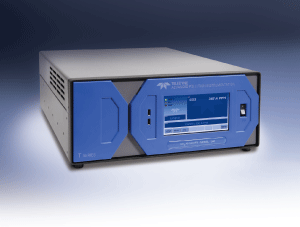
Manual: not available
The Model 100EU Low Level SO2 Analyzer uses the proven UV fluorescence principle, coupled with state of the art microprocessor technology to provide accurate and dependable measurements of low level SO2.
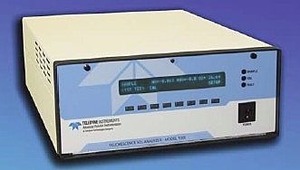
Manual: not available
The Model T265 uses Chemiluminescence with Nitric Oxide (NO) as a reagent, making it safe, stable, and effective for all applications. The NO-CL method for Ozone has several advantages over the conventional UV absorption technology, including the avoidance of positive and commonly found interferences such as VOCs, fine particulates, Mercury, terpenes, ClO2 and others. If these pollutants are present in the atmosphere, it can cause UV absorption analyzers to give an artificially high ozone measurement. The innovative T265 combines speed of response, sensitivity and stability of our proven nitrogen oxide analyzer, with a simple user interface, to provide reliable ozone measurements under the harshest conditions.
The Model 400E UV Absorption Ozone Analyzer is a microprocessor-controlled analyzer that uses a system based on the Beer-Lambert law for measuring low ranges of ozone in ambient air. A 254 nm UV light signal is passed through the sample cell where it is absorbed in proportion to the amount of ozone present. Every three seconds, a switching valve alternates measurement between the sample stream and a sample that has been scrubbed of ozone.
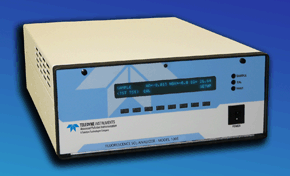
Manual: not available
The Model 43i-TLE SO2 Analyzer is a pulsed fluorescence gas analyzer known for superior accuracy, sensitivity and reliability in trace-level ambient applications. The analyzer provides accurate and dependable measurements of low level SO2, down to 50 ppt.

Manual: Microsoft Word - 43i-TLE_102780-00_16May2015.doc (thermofisher.com)
The Model 42i operates on the principle that nitric oxide (NO) and ozone (O3) react to produce a characteristic luminescence with an intensity linearly proportional to the NO concentration. Infrared light emission results when electronically excited NO2 molecules decay to lower energy states.
Nitrogen dioxide (NO2) must first be transformed into NO before it can be measured using the chemiluminescent reaction. NO2 is converted to NO by a molybdenum NO2-to-NO converter heated to about 325 °C.
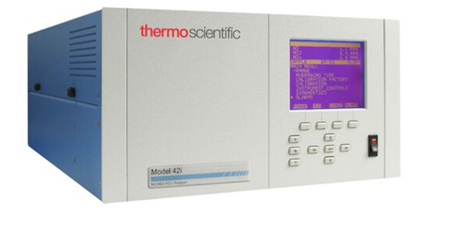
The GCMS-QP2010 is a high cost-performance gas chromatograph/mass spectrometer intended for high-precision Gas Chromatography/Mass Spectrometry (GC/MS) analysis. The instrument separates chemical mixtures (the GC component) and identifies the components at a molecular level (the MS component). It is one of the most accurate tools for analyzing environmental samples, working on the principle that a mixture will separate into individual substances when heated. The heated gases are carried through a column with an inert gas (such as helium). As the separated substances emerge from the column opening, they flow into the MS. Mass spectrometry identifies compounds by the mass of the analyte molecule.

Manual: Shimadzu-GCMS-QP2010-UsersGuideVer2.5.pdf (cuny.edu)
The Model T201 combines a specially configured chemiluminescence analyzer with an external thermal converter to give stable and repeatable NH3 measurements at very low levels. In addition, the T201 provides simultaneous values for NO, NO2, and NOx concentrations.
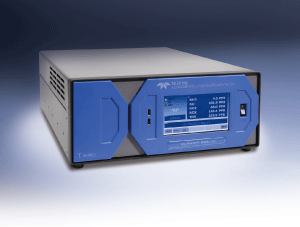
Manual: not available
Aerosol Samplers
The high volume Air Flow TSP sampler is a dedicated sampling system to collect particles in a flowrate range to 120-1400 liters per minute. Fully in compliance with all standard methods EPA, the TSP high volume sampler is microprocessor controlled and a Venturi flow measurement system keep the flowrate constant with a great accuracy.
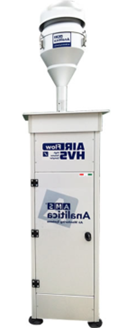
http://www.amsanalitica.com/en/product-details/items/airflow-hvs-tsp.html
The Speciation Air Sampling System (SASS) or Super SASS can collect multiple ambient aerosol samples. The basic SASS accommodates up to five (5) sampling canisters while the SuperSASS accommodates eight (8) sampling canisters used in groups of up to four. The SASS has active flow control on canisters 1 through 3 with canisters 4 and 5 using a critical orifice for flow setting. The SuperSASS can operate in groups, each with active flow control. In both systems, each individual canister has its own PM2.5 sharp cutoff cyclone inlet; denuder ring and tandem 47 FRM filter holders. As such, each canister contains all necessary components for excluding particles above 2.5 µm, for removing interfering gases, and for collecting ambient fine particles.
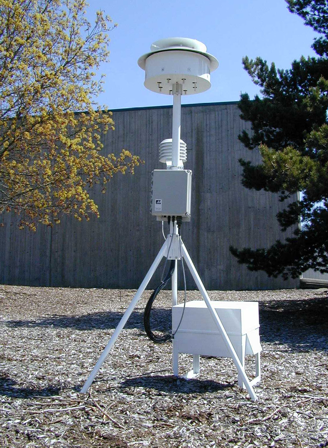
Manual: http://www.epa.gov/ttnamti1/files/spectraining/MetOneSOPSASS-9800RevD.pdf
Aerosol sampler based on the US EPA Federal Reference Method for PM2.5 sampling (RFPS-0498-117) and PM10 sampling (RFPS-1298-126). The Partisol-FRM PM2.5 Sampler is a single-filter, stand-alone unit for the manual sampling of PM2.5 in ambient air. For PM2.5 US EPA reference method sampling, the system is equipped with the US EPA designed PM2.5 inlet system, which includes the PM2.5 WINS impactor or the Very Sharp Cut Cyclone (VSCC). For PM10 US EPA reference method sampling, the system is equipped with the classical Thermo PM10 inlet. High-quality, molded filter cassettes house 47 mm filters, and are installed in a convenient filter cassette carrier.
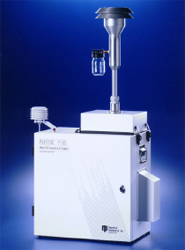
Manual: http://www.atmospheric-
The Polyurethane Foam (PUF) high volume air sampler is used to collect airborne particulate and vapor contaminants accurately and at flow rates up to 220 liters per minute. A dual chambered aluminum sampling module contains both filtering systems. Airborne particulates are collected onto the filter paper media and the vapor elements onto a piece of polyurethane foam in the lower chamber of the sampling module.

Manual: not available
The Thermo Scientific Ambient Particulate Monitor, TEOM 1405-DF simultaneously measures PM10, PM2.5 and PMCoarse (PM10-2.5) mass concentration as it exists in the ambient air. The 1405-DF system is composed of two Filter Dynamics Measurement Systems (FDMS) and two TEOM mass sensors housed in a single cabinet, network-ready configuration that includes the control system with touch screen user interface. It also provides representative short and long term reading of the ambient PM concentration, even in the presence of volatile materials. Finally, it utilizes a direct mass measurement that is not subject to measurement uncertainties found in surrogate techniques such as beta attenuation, light scattering and pressure drop.

Manual: not available
Low-cost sensors
ENSENSIA (short for Environment Sensing Appliance) is an integrated low-cost sensor device capable of measuring CO, NO, NO2, O3, SO2, Total VOCs, CO2, and PM2.5 . It is a Raspberry PI-based device that offers several edge-computing opportunities, stability of use, and remote control.

For more information visit ENSENSIA's website
